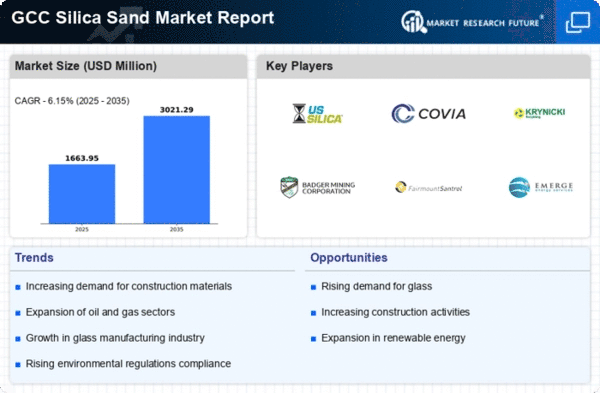The GCC Silica Sand Market has experienced dynamic growth and competition in recent years, driven by increasing demand from various sectors such as construction, glass manufacturing, and industrial applications. The market is characterized by the presence of several key players who leverage their extensive resources, technological advancements, and regional advantages to establish their positions. Companies in this market are focusing on optimizing production processes, expanding their geographical reach, and enhancing the quality of their products to cater to evolving customer needs.
This competitive landscape is shaped by factors such as pricing strategies, distribution networks, product diversification, and collaborations, which play a crucial role in determining market leadership.
Fujairah Gold has established a strong presence within the GCC Silica Sand Market by leveraging its strategic location and commitment to quality. The company emphasizes the production of high-grade silica sand tailored to meet the specific requirements of various industries in the region. One of Fujairah Gold’s key strengths is its advanced processing technology, which allows for the efficient extraction and refinement of silica sand. This capability not only ensures the consistency and quality of its products but also enables the company to cater to a diverse client base.
Moreover, Fujairah Gold’s robust supply chain and distribution network further enhance its market presence, allowing for timely delivery and customer satisfaction, solidifying its position as a reliable supplier in the GCC.
W.R. Grace and Co. has made a significant impact on the GCC Silica Sand Market through its strategic approach to product innovations and customer relationships. The company offers a range of high-performance silica sand tailored for specific applications, particularly in the construction and industrial sectors. A key strength of W.R. Grace and Co. is its ability to provide customized solutions designed to meet the diverse needs of its clients in the GCC region. Its strong market presence is further enhanced by strategic mergers and acquisitions that have expanded its capabilities and market access. W.R.
Grace and Co. continuously invests in research and development to stay ahead of industry trends, ensuring that it remains competitive in providing superior silica sand products. The company’s focus on sustainability and efficiency in its operations contributes to its reputation as a leader in the GCC Silica Sand Market, meeting the growing demands of various industries while maintaining high standards of service.












Leave a Comment